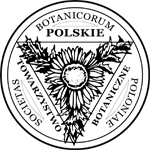Abstract
The studies carried out in the years 2004-2005 and in 2009 were aimed at identifying the functioning conditions of a boreal plant relict, Salix lapponum, in its stands under anthropopressure in the Łęczna-Włodawa Lakeland. The study results confirmed that the number of S. lapponum stands on Lake Miejskie and on Cow Marsh and its population size had significantly decreased as well as the population condition had deteriorated during the last 50 years. Based on the results of an analysis of environmental (biocenotic and abiotic) factors it was found that changes in habitat conditions in its stands were the main threat for downy willow. Another cause of population decline and the deteriorated condition of downy willow individuals may be the habitat isolation. The observed intraspecific phenomena, i.e. the lack of flowering in individuals and the lack of downy willow seedlings could be the reason for insufficient reproduction efficiency, ipso facto, the weaker adaptation of individuals to changes in habitat condition. Therefore, it seems that it is necessary to pursue active species conservation and protection which should primarily involve population reconstruction - restitution.
Keywords
Salix lapponum; peat bog; Lake Miejskie; Cow Marsh; anthropopressuremag






